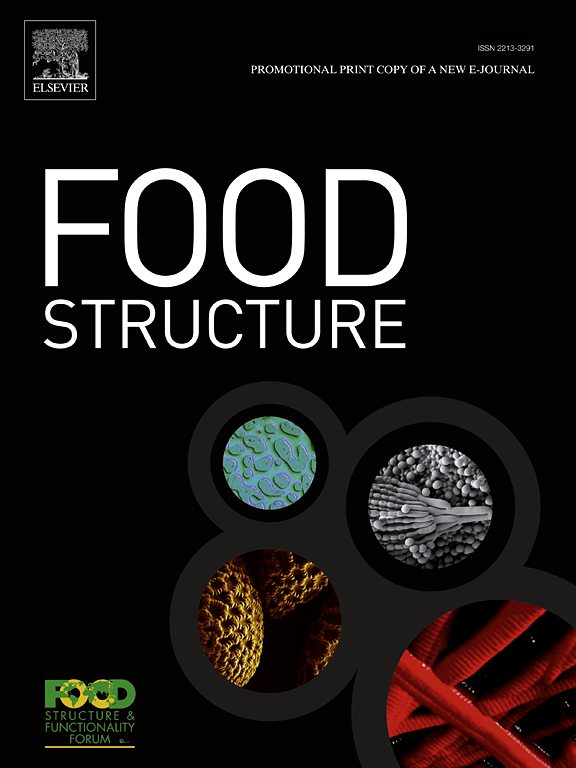Effectiveness of supercooled freezing in suppressing ice recrystallization during frozen storage
IF 5.9
3区 农林科学
Q1 FOOD SCIENCE & TECHNOLOGY
引用次数: 0
Abstract
Ice recrystallization often occurs during frozen food storage, an undesirable occurrence that can cause further damage to food cells and tissues. One factor that triggers its occurrence is the initial structure of the ice crystals formed during the freezing phase. During frozen storage, small ice crystals may recrystallize due to their high surface-to-volume ratio and excess free energy. In this study, the ice recrystallization of supercooled frozen tofu was evaluated during a 12-week frozen storage period and compared with that of slowly and rapidly frozen tofu. The storage temperature was at − 10 ± 2 ℃. Slow freezing at − 10 ℃ static air has produced large crystals up to 0.6 mm before storage and tended not to grow further. Rapid freezing at − 80 ℃ static air with elongated ice crystals exhibits the highest recrystallization rate, especially on the surface of the sample, where the maximum ice crystals grew from 0.23 mm before storage to 0.45 mm after 12 weeks. Supercooled freezing has produced small and homogeneous ice crystals, the largest being 0.15 mm, but their spherical shape tends to have a low affinity for recrystallization, which has allowed the crystals to maintain their size and structure during the frozen storage.
过冷冷冻对抑制冷冻储存过程中冰再结晶的效果
在冷冻食品储存过程中经常会出现冰重结晶现象,这种不良现象会对食品细胞和组织造成进一步的损害。引发重结晶的一个因素是冷冻阶段形成的冰晶的初始结构。在冷冻储存过程中,小冰晶可能会因表面体积比高和自由能过剩而再结晶。本研究评估了过冷冻豆腐在 12 周冷冻储存期间的冰再结晶情况,并将其与慢速冷冻豆腐和快速冷冻豆腐的冰再结晶情况进行了比较。贮藏温度为 - 10 ± 2 ℃。在 - 10 ℃ 静态空气中缓慢冷冻豆腐,在储存前会产生 0.6 毫米的大晶体,并且不会继续增长。在 - 80 ℃ 静态空气中快速冷冻,冰晶拉长,再结晶率最高,尤其是在样品表面,最大冰晶从储存前的 0.23 mm 增加到 12 周后的 0.45 mm。过冷冷冻产生了小而均匀的冰晶,最大的冰晶为 0.15 毫米,但其球形往往具有较低的再结晶亲和力,这使得冰晶在冷冻储藏期间能够保持其大小和结构。
本文章由计算机程序翻译,如有差异,请以英文原文为准。
求助全文
约1分钟内获得全文
求助全文
来源期刊

Food Structure-Netherlands
Chemical Engineering-Bioengineering
CiteScore
7.20
自引率
0.00%
发文量
48
期刊介绍:
Food Structure is the premier international forum devoted to the publication of high-quality original research on food structure. The focus of this journal is on food structure in the context of its relationship with molecular composition, processing and macroscopic properties (e.g., shelf stability, sensory properties, etc.). Manuscripts that only report qualitative findings and micrographs and that lack sound hypothesis-driven, quantitative structure-function research are not accepted. Significance of the research findings for the food science community and/or industry must also be highlighted.
 求助内容:
求助内容: 应助结果提醒方式:
应助结果提醒方式:


